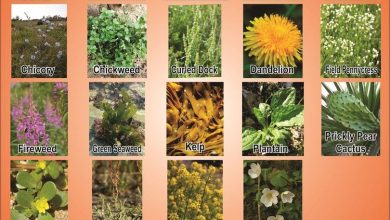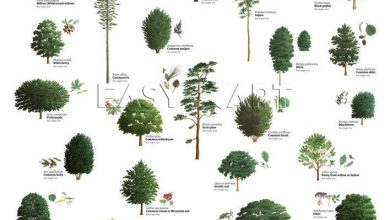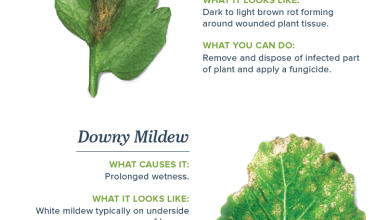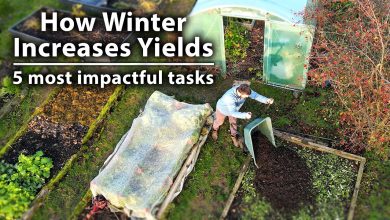How to Fertilize Naranjo: [Components, Needs and Importance]
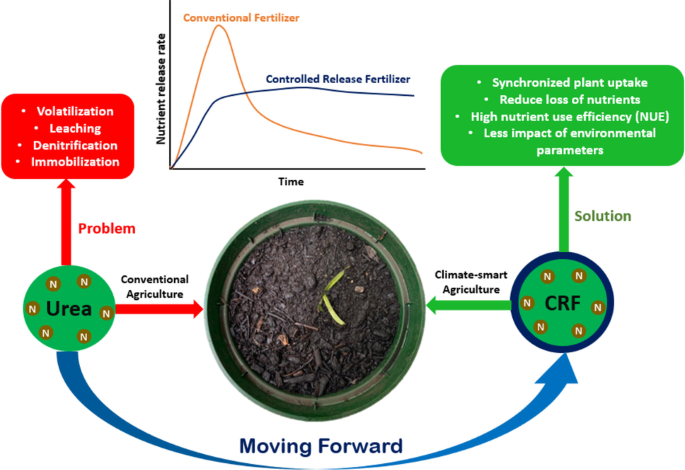
 Oranges are a highly appreciated fruit throughout the world. Without a doubt, they have an extraordinary commercial positioning.
Oranges are a highly appreciated fruit throughout the world. Without a doubt, they have an extraordinary commercial positioning.
In this article we will touch on what refers to the correct fertilization of the tree where the oranges come from; the orange
This tree species is very well cataloged, due to the aforementioned importance of its fruit.
An appropriate fertilization is vital to achieve success in any crop, and in the specific case of the orange tree it is not an exception.
Why fertilize an orange tree?
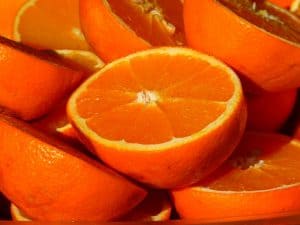 The orange tree must be fertilized because it has a series of nutritional needs that must be satisfied.
The orange tree must be fertilized because it has a series of nutritional needs that must be satisfied.
This tree from the Rutaceae family must be fertilized given the amount of nutritional elements it consumes in the so-called vegetative cycle.
It is also considered that the fertilizer to be used includes the necessary requirements to produce a good harvest.
Likewise, said subscriber must enable the development and maintenance of its vegetative organs.
With the correct fertilization, leaves of good size and color are achieved, with nerves of correct morphology. That is to say a tree of good presence.
Likewise, the fruits (oranges) will have a size according to expectations. Even the skin of the fruit will be the correct thickness and color.
You may also be interested in: The pruning of the orange tree.
What does the orange tree need?
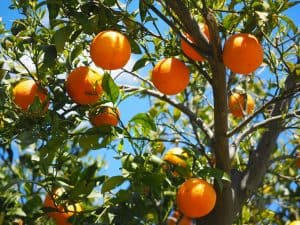
The nutritional needs of citrus fruits (such as lemon or orange trees) are defined as the amount of nutritional elements consumed by the plant during an annual vegetative cycle.
In its determination, it is necessary to consider the consumption in the development of new organs and in the growth of old permanent organs together with the global balance of export of nutrients to the growing organs and the subsequent recovery of the elements exported from the applied fertilizers..
A distinction should be made between old leaves and permanent woody organs.
The old leaves should be considered as a source of nutrients, so much so that at the beginning of the vegetative cycle, a considerable proportion of their content in mobile elements is made by the new organs, and when the conditions are met to recover that export, part of these Leaves have already fallen off the tree.
For the orange tree to thrive in perfect conditions, it will need nitrogen, phosphorus, potassium, calcium, magnesium and sulfur as macronutrients.
In the case of micronutrients, chemical elements such as boron, copper, iron, manganese, molybdenum and zinc are counted.
Each one of them has a relevant function within the internal actions that they carry out in the plant.
When one of them is missing, different problems can be generated in the plantation, cultivation and harvest.
For example:That the roots are not well fixed to the ground and, therefore, not enough strength is offered to the structure of the largest tree.
It is also possible that the internal sage transport movement may not be enough to reach all levels.
In more complex cases, there is a decrease in the quality of the fruits, finding them smaller, with a poorly developed shell or tasteless pulp.
What are the main components of the fertilizer for the orange tree?
The main components that the fertilizer for orange trees must contain are potassium, nitrogen and phosphorus.
For successful work in our orange tree crops, nothing is safer than combining these three elements.
With these elements we can get a good fertilizer for orange trees, well prepared.
| Consumption in the development of new organs and growth of old organs of the orange tree (g/tree) | Seedling | Developing | Adult (over 12 years old) |
| Nitrogen (N) | 6.8 | 210 | 667 |
| phosphorus (P) | 0.8 | 18 | 53 |
| Potassium (K) | 3.6 | 121 | 347 |
| Magnesium (Mg) | 1.4 | 46 | 135 |
| Iron (Fe) | 0.04 | 1.1 | 3.4 |
| Consumption covered by reserves of old leaves (%) | Seedling | Developing | Adult (over 12 years old) |
| Nitrogen (N) | 25 | 32 | 32 |
| phosphorus (P) | 12 | 16 | 17 |
| Potassium (K) | 22 | 28 | 29 |
| Magnesium (Mg) | 24 | 30 | 30 |
| Iron (Fe) | 0.0 | 0.0 | 0.0 |
| Orange net annual needs (g/tree) | Seedling | Developing | Adult (over 12 years old) |
| Nitrogen (N) | 5.1 | 142 | 453 |
| phosphorus (P) | 0.7 | fifteen | 44 |
| Potassium (K) | 2.8 | 32 | 246 |
| Magnesium (Mg) | 1.0 | 32 | 95 |
| Iron (Fe) | 0.04 | 1.1 | 3.4 |
What deficiencies can the orange tree have and how to detect them?
There are several shortcomings that an orange tree can suffer from, here we see the most important ones and how they are evidenced:
- The lack of nitrogen: it is evidenced by smaller leaves and with a yellowish color.
- Phosphorus deficiency: it manifests itself with enlarged fruits but with very little juice. There is also less flowering.
- Meanwhile, orange trees that lack potassium tend to have wrinkled leaves that roll up, and the fruits are very small.
- As for magnesium deficiency, it manifests itself with yellowing of the leaves, while the fruits are not sweet and small.
- The lack of calcium causes the tips of the branches to dry out.
- Sulfur deficiencies bring the tree curvature and extreme paleness in the leaves. It can be corrected with fertilizers and sulfur compounds.
- If the orange tree lacks iron, it shows up with leaves with yellow tones.
- If the plant lacks manganese, yellow spots will also appear on the surface of the leaves.
- When there is a lack of boron, the leaves can become almost translucent.
- If there is little presence of molybdenum, the symptoms are similar to those of a lack of nitrogen.
How to make a compound fertilizer for orange trees step by step?
To make a compound fertilizer for orange trees step by step, let’s see the following instructions:
- The first thing is to make holes in a container one meter deep.
- Add soil to the container (not much, about two inches or so).
- Then place the organic waste of vegetable origin.
- Next, add iron sulfate and calcium carbonate.
- Next, add animal manure and mineral manure.
- Add another bit of soil on top.
Every fifteen days you must stir with a shovel. In this way it is achieved that what is above passes below and vice versa.
From here, worms will begin to appear, which is presented as a sign that the necessary decomposition is in process.
Wait until the entire mixture is homogeneously black and it is at this moment that it can be applied.
This compost compound binds to the soil near the base of the orange tree (it is not recommended that it make direct contact with the trunk).
And, for best results, its application is recommended four times a year.
Where to buy fertilizer for orange trees?
It is best to go to a nursery or a specialized store in your area. However, if you don’t have access to either, we might recommend these products on Amazon:
Discount!  Fertilizer for Citrus and Fruit Trees – Bucket 5kg
Fertilizer for Citrus and Fruit Trees – Bucket 5kg
- Batlle Citrus and Fruit Fertilizer is a granulated fertilizer, formulated with a balanced ratio of nutrients, which…
- large floral induction, fruit set and fattening in the production period. Contains micronutrients that…
- Composition: CE fertilizer. NPK 14-8-12 + 2MgO fertilizer with micronutrients
- Dose: Apply by spreading evenly at a rate of 40g/m2
€19.95 −€1.35 €18.60 View on Amazon Prices with VAT without transport
Last updated on 2022-07-31 / Affiliate Links / Affiliate API Images
 All Crop Hakaphos Orange fertilizer for irrigation. 25 Kilos. for fattening and ripening of the Fruit High demands for Potassium such as fruit trees, vegetables, citrus, etc. 24-48 H. for ALL CROPS
All Crop Hakaphos Orange fertilizer for irrigation. 25 Kilos. for fattening and ripening of the Fruit High demands for Potassium such as fruit trees, vegetables, citrus, etc. 24-48 H. for ALL CROPS
- Formula recommended to finalize the fattening and ripening of the fruit in crops with high demands for Potassium such as fruit trees,…
- To place special orders for HAKAPHOS, consult special promotions at www.todocultivo.net
- DELIVERIES IN 24-48 HOURS BY TODOCULTIVO.NET
- fertilizer with trace elements
€104.90 View on Amazon Prices with VAT without transport
Last updated on 08-01-2022 / Affiliate Links / Affiliate API Images
 Expert Advice Citrus Organico Organomineral fertilizer specific for citrus, 5 kg
Expert Advice Citrus Organico Organomineral fertilizer specific for citrus, 5 kg
- Npk 6-5-5 contains a high percentage of natural organic substances such as corknut, hops and neem panel.
- The neem panel is a substance of vegetable origin that restores the fertility of the exploited territories and favors…
- Distributed regularly throughout the year, it guarantees complete nutrition and optimal plant development.
- Fertilization period: from March to November; Frequency: every 30-40 days; How to use: shoot, lightly bury and…
View on Amazon Prices with VAT without transport
Last updated on 2022-07-26 / Affiliate Links / Affiliate API Images
Bibliography and references
- https://dialnet.unirioja.es/servlet/articulo?codigo=6828241
- http://repositori.uji.es/xmlui/handle/10234/161602
- https://digital.csic.es/bitstream/10261/11711/1/EL%20RIEGO%20DE%20LOS%20HUERTOS.PDF
- https://www.researchgate.net/profile/Pedro_Gavilan/publication/280531869_Fertirrigacion_con_nitrogeno_fosforo_y_potasio_en_citricos/links/55b7c5c508ae9289a08c1517/Fertirrigacion-con-nitrogeno-fosforo-y-potasio-en-citricos.pdf

